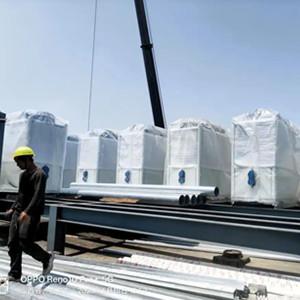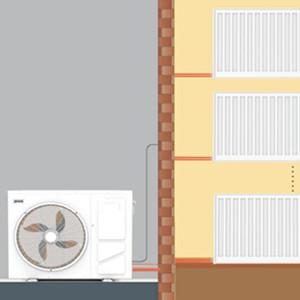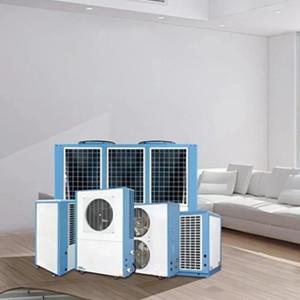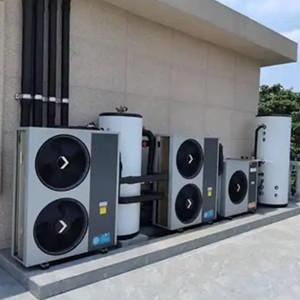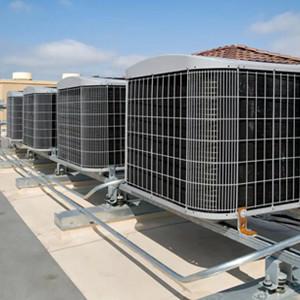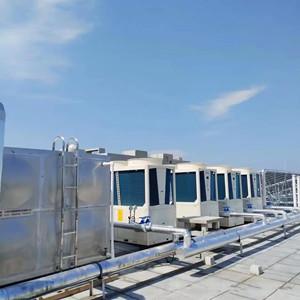Why does the Air Source Heat Pump Make a Buzzing Sound?
1. Electromagnetic noise caused by excessive current
When the operating current of the air source heat pump switch or electrical equipment is close to the rated value, the armature of the overcurrent trip coil will vibrate under the action of the magnetic field and spring, producing a noticeable buzzing sound. This phenomenon is a normal physical phenomenon, but if the current continues to be overloaded, it may cause the equipment to trip or be damaged.
Solution
Check the load condition and confirm whether the equipment is connected to too many high-power electrical appliances at the same time, causing overload operation. The total current load can be reduced by disconnecting some electrical appliances or using them at off-peak times. If the voltage is too low (such as the voltage of a 220V model drops to less than 200V), contact the power supply department to adjust the voltage or replace the matching power supply equipment (such as a voltage regulator). If the rated current of the air source heat pump switch is too small (such as a 16A switch carrying too much current), it is necessary to replace the model that matches the load (such as 32A).
2. Loose installation causes mechanical vibration
If the air source heat pump switch, humidifier and other equipment are not installed firmly (such as loose fixing screws, the shell is not completely locked), abnormal noise may be generated due to increased vibration when the current passes or the components are running. For example, the fan shaft of the humidifier is loose, and the air duct of the central air conditioner is not reinforced.
Solution
Check whether the base of the equipment is level, use a level to adjust the base position, and ensure that the equipment is placed stably. Retighten all fixing screws, especially the connection between the equipment and the ground and the bracket to avoid noise caused by vibration. Ensure that there is enough heat dissipation space around the air source heat pump equipment (it is recommended to be at least 50 cm around), and remove debris that may hinder airflow or cause resonance.
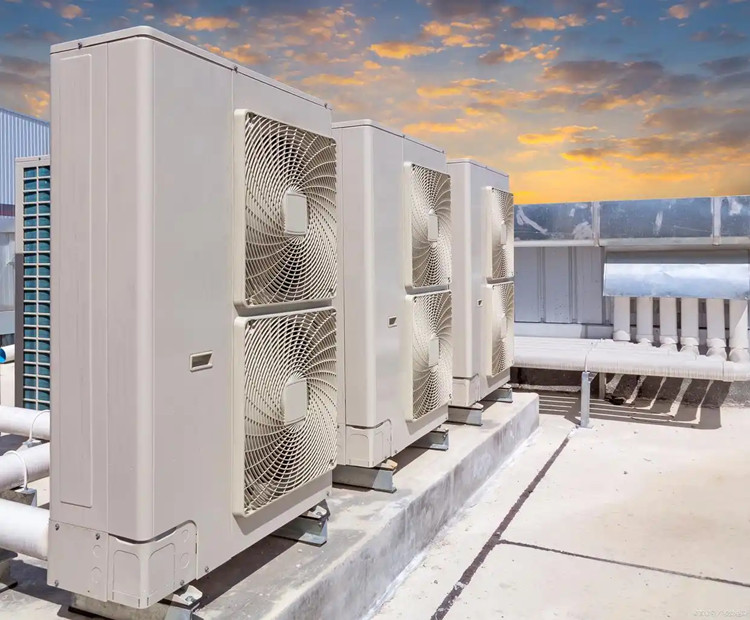
3. Loose wiring causes poor contact
Insufficient tightening of electrical connectors or oxidation of wires will increase resistance, local heating and vibration when current passes. For example, if the wiring terminals of the air source heat pump switch are not tightened or the wires are stripped too long, a sizzling sound may be generated due to poor contact.
Solution
After disconnecting the power supply, check the power cord, fan cord, and compressor terminals one by one to see if they are loose, and use a screwdriver to retighten all the terminal screws. Pay special attention to the connection between the power cord and the air source heat pump switch. If there are signs of oxidation or ablation, clean the contact surface or replace the terminal.
Other possible causes include
Parts wear (such as motor bearings, aging of atomizers), improper maintenance (scale blockage, carbon accumulation in filter elements), etc., but the above three factors have been mentioned many times in the evidence and are the most common and direct influencing factors.
Supplementary suggestions
Regularly maintain and clean the air source heat pump inlet filter (dust accumulation will increase the fan load and increase noise), check whether the compressor capacitor is aging, and replace it if necessary. If the problem still exists after the above operations, it may involve complex faults such as compressor bearing seizure and refrigerant leakage, and you need to contact a professional for repair.
